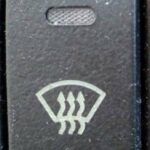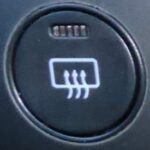Automatic Driving Lessons In North Dublin- Servicing Your Car
Servicing your car annually is essential in keeping your car in good condition. Usually, servicing your car is once a year but if you do a lot of driving, the RSA recommend you do it every 15000 kilometres. Failure to service regularly results in increased wear and tear of your engine, increased fuel consumption and the possibility of engine failure. If you do not service your engine, you will not know if your car needs oil or coolant and if these fluids get too low you are in for a lot of trouble. If your engine has no oil, your engine will cease and if you have no coolant your engine will overheat and could go on fire while you drive.
When you bring your car to a garage and ask for a standard service, you will usually get an oil change, replacement of the spark plugs, top up your coolant and brake fluid levels and they also might fill your windscreen washer fluid level. All of these are essential in engine health.
When you check your oil levels and you see that your oil is dark black, you know you need to replace the oil. Oil, when it is fresh, is usually transparent and you can nearly see through it. After time, when the oil is being churned around the engine, the oil picks up carbon molecules inside the engine turning the oil jet black. When you see this have your oil replaced. You will notice you’re engine sounds much smoother when you do an oil change.
Usually, as the oil is draining out of the tank, the mechanic will change your spark plugs. Usually, you would replace the spark plugs every 60000 kilometres. This is only a guideline and always follow the manufacturer’s specification. Spark plugs are essential in creating the spark which starts your engine.
“Your spark plugs are what supply the spark that ignites the air/fuel mixture, creating the explosion which makes your engine produce power. … Your spark plugs, along with the electrical and timing equipment which powers them, are part of what’s known as your ignition system.” May 21, 2019- Google
During your service, your coolant level will be topped up. Normally your mechanic will not need to drain and replace all the fluid and normally they will fill the tank to the top. Your mechanic will be looking for dirt and grim and if they see this inside your tank there may be another issue that could need addressing. Always keep an eye of coolant levels in between servicing as driving a car with low or no coolant could result in an engine fire at the side of the road.
Your mechanic will also check your brake fluid level. This fluid is not used as much as oil or coolant and sometimes it does not need any fluid. Always check your level before you bring the car to the garage and check the level when you bring the car home. You will know if you need brake fluid when your brakes feel soft and spongy when you press them. If ever you feel this, check your brake fluid levels at once.
Hopefully, you are not driving around with no water in your windscreen washer tank. Keeping this topped up is essential to being able to see out of your windscreen. Your mechanic will top this up for you but you need to keep on top of this yourself. There is nothing worse than a dirty truck driving past and spraying mud onto your windscreen and not being able to clear it.
Always look after your car’s health. It can save you expensive repair jobs and more importantly, it will keep you and other road users safe.
The RSA has a downloadable booklet and it is a great help in looking after your engine. Click here for RSA BOOKLET










